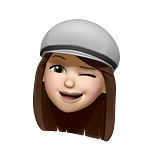I recently use iOS-Charts at work. It’s a very flexible, easy-to-use third-party library, allowing you to highly customise your chart.
This library is around 95% similar to its Android counterpart, making developing apps for both platforms much easier.
Here I use some high-income countries' birth rate data to demonstrate how to set up a basic bar chart using iOS-Charts.
Before Starting
The source code is shown below. In case you are a bit confused about some classes or functions I use in this example, here is a little explanation about raw data processing that is not relevant to today’s topic iOS-Charts:
The raw data in this example is a string array.
